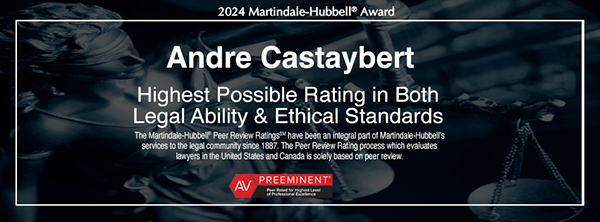Your Product Deserves the Protection of a Trademark
Whether you are a one-person startup, a mid-sized company or one headed for the Fortune 500, registering a trademark to protect the name or logo for your product or service is one of the single most important steps you take. Imagine pouring your heart and soul into developing a product, and then not being able to prevent someone from walking away with that distinctive name, tag line sound that identifies your product as yours. Your distinctive symbol may not be as famous as Chanel’s interlocking C’s, or the Nike swoosh, but if it symbolizes your business, it’s too valuable not to protect.
What will a trademark do for you?
Your trademark identifies and distinguishes your product from any others. It will allow you to block another company or individual from using the consumer recognition, trust and reputation that you built around your product. Any infringement on a trademark is illegal, and grounds for you to sue the infringing entity. There are several benefits to federal registration. Registering:
- Gives you presumptive validity and exclusive right to use the mark.
- Establishes a nationwide priority.
- Enables you to deter and stop confusing fakes and free riders.
- Makes you more attractive to investors, partners or licensees.
- Can allow you to stop counterfeits and infringing products at Customs.
- Gives you access to federal courts if you need to sue for infringement.
- Reduces the risk that you will have to rebrand or purchase third-party rights.
- Increases your brand’s ability to grow.
- Offers the possibility of obtaining an “incontestable” trademark after 5 years.
How easy will it be to trademark your product?
The realm of trademarks spans a spectrum from made-up, or “fanciful” terms that are relatively easy to trademark, to generic terms, which can be more difficult to trademark. Fanciful terms, like Google, are inherently distinctive, and pretty easy to protect right off the bat. An everyday term, like Cars.com is considered “descriptive,” and will likely be difficult to trademark, until the product associated with the name has already gained significant brand recognition. Even then, the protection may apply only to products that match virtually identical marks and products. When a trademark is not associated with the underlying product, as is the case with Apple, for instance, it is considered “arbitrary,” and relatively easy to secure.
How do you get it done?
Federal trademark registration involves three general phases:
Clearance – This is the phase when you check to see whether your proposed trademark can be registered.
Filing – If the trademark you want to register “clears,” your attorney will prepare and file applications. The earlier you file, the better.
Prosecution – An Examiner at the U.S. Patent & Trademark Office (USPTO), will examine your application, bringing it to the registration phase. Then, during a “publication” phase, third parties may object to the registration of your mark.
So what’s the takeaway here? Register your trademark.
To learn more about the trademark process, you can visit the USPTO website, or contact us.
To learn more about how CASTAYBERT PLLC can assist you in clearing, registering and enforcing your trademark, click here, or for intellectual property matters, click here.
Disclaimer: This article is intended for informational and educational purposes only. Because of the generality of this article, the information it provides may not be applicable in all situations and should not be acted upon without specific legal advice based on particular situations.









